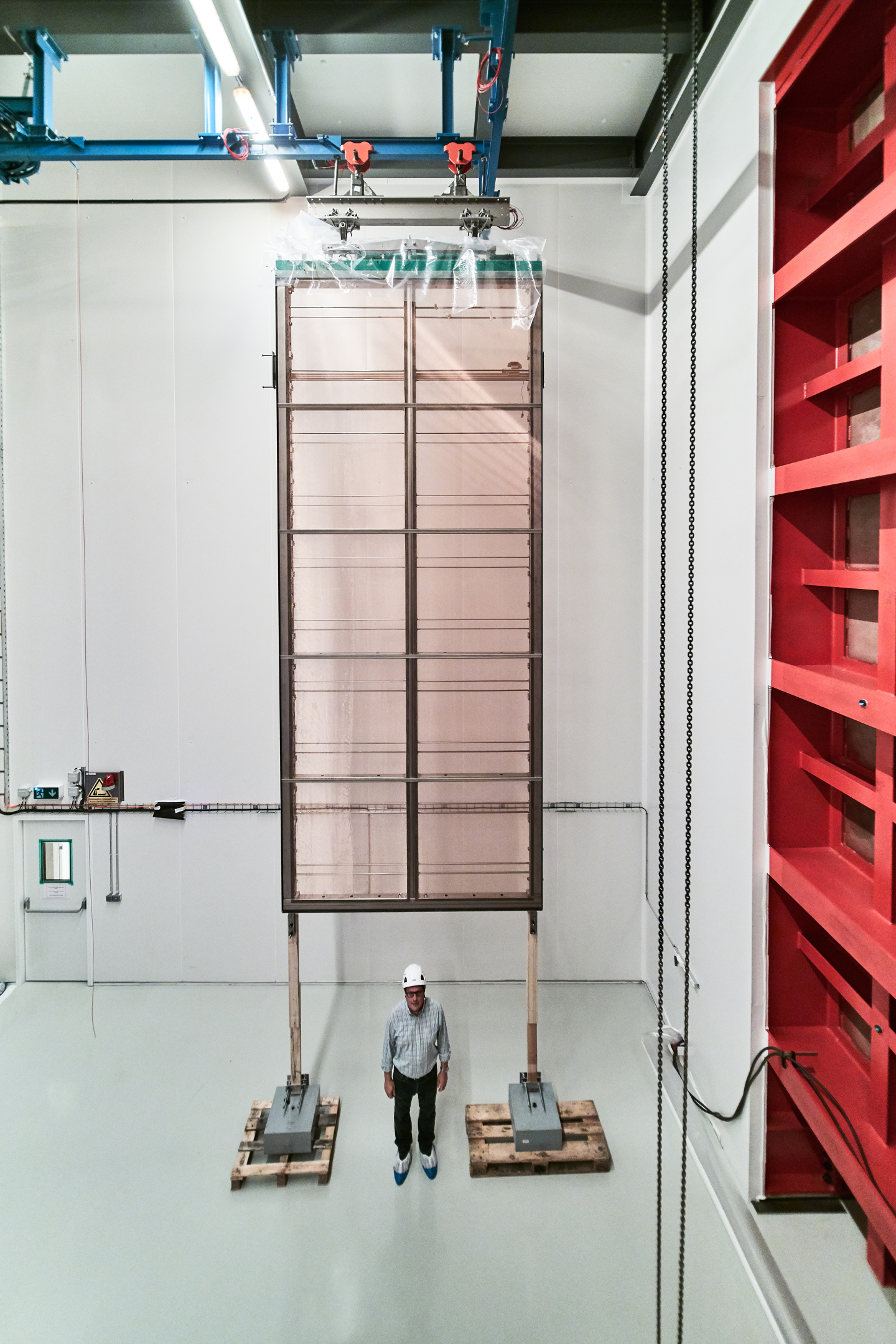Bring on the DUNE detectors
DUNE (Deep Underground Neutrino Experiment) is an international experiment pushing the frontiers of neutrino science and proton decay in the next two decades. The experiment will use the world's most intense neutrino beam from Fermilab’s Long-Baseline Neutrino Facility, a Near Detector to characterise the initial beam and study neutrino interactions near the source, and a Far Detector (FD) installed 1,300 km downstream at a depth of 1.5 km at the Sanford Underground Research Laboratory in South Dakota. The collaboration is currently constructing the protoDUNEs, two prototypes for the FD, at the CERN Neutrino Platform.
With four cryogenic modules housing one liquid Argon (LAr) TPC each and a total of 68,000 tons of LAr, the DUNE FD will be the largest LAr detector ever built. The protoDUNE programme at CERN is currently constructing two cryostats, each containing about 800 tonnes of LAr, where the two variants of LAr TPC technology, single-phase and dual-phase, are being prototyped using the technical solutions, detailed designs and full-size individual elements of the DUNE FD detectors. Using the dedicated very low energy extensions of H2 and H4 beamlines currently under construction, the protoDUNEs will measure charged particle cross sections in Argon at energies relevant to DUNE neutrino interactions, while also advancing the state of the art LAr event reconstruction algorithms and software suites.
The two protoDUNE cryostats are almost complete and while the CERN team is preparing the cryogenics systems the international collaboration is busy constructing the elements of the TPC in the US, in Europe and at CERN.
Concerning protoDUNE-single phase, a critical milestone was the reception at CERN of the first Anode Plane Assembly (APA) from PSL in Wisconsin, USA. An APA is a 6m x 2.3m anode module composed by 4 layers of wires on each side, designed to detect the electrons produced by ionising particles passing through the detector with mm position resolution. This is the first full-size DUNE APA ever constructed. The APA has been transported inside the NP04 clean room to install the cold electronics and scintillation detection systems for charge and light collection and readout. The so-assembled APA is going to be tested inside the Cold Box, a Faraday cage designed and delivered by the CERN team allowing operations in an external noise-free environment and at low temperatures using a dedicated LN2 system, before insertion inside the cryostat. Five more APAs will subsequently be received and integrated in the TPC.

Figure 1: First APA (Anode Plane Assembly) ready to be installed in the protoDUNE-SP detector.
Other parts of the TPC such as the Field Cage, necessary to keep the electric field uniform inside the detector volume, and the Cathode Plane are being assembled at CERN. Currently, a quarter of the 28 field cages modules have been completed and stored in CERN's EHN1 hall.
Development of the DAQ and Slow Control systems are ongoing with activities centred at CERN and with major contributions and leadership from the CERN group. All DAQ hardware is installed and a vertical slice, which will be used to test each APA before installation, as well as the full data acquisition chain, is operating already in the Neutrino Platform.
The construction of protoDUNE-dual phase is being pursued by the WA105 collaboration. The pre-assembly of the first TPC elements such as drift cage and readout planes is about to begin and will be installed inside the cryostat in the coming months. The dual phase offers a different approach, where the drifting charges are extracted to the gaseous argon and amplified by Multi Pattern Gas Detectors. An important landmark for this novel technology was reached this summer with the start of operation of a 5 ton (3m3) demonstrator at the previous West Area Neutrino Facility. About 350,000 cosmic events have been collected so far and the quality of the data illustrates the exceptional imaging power of the dual phase TPCs at the ton scale. In addition, this is the first time at CERN that a large (24m3) membrane cryostat was constructed and used for a LAr TPC. CERN also constructed and operated the cryogenic and argon purification system. The cryostat and cryogenic plant are similar to the systems being built for the protoDUNEs, much experience was gained during their construction and commissioning. The fact that a high and stable level of LAr purity was achieved is encouraging for the success of the protoDUNEs.
CERN involvement in DUNE is not limited to the protoDUNE installation: H2 and H4 beamline simulation, as well as the DUNE FD cryostat and cryogenic systems design are other major tasks lead by CERN. In addition, the protoDUNE Data Reconstruction and Analysis group is based at CERN, with laboratory and outside collaborators smoothly integrated and making excellent progress, including Monte Carlo productions and preparations for handling real data.
The collaboration is facing the demanding schedule in the months ahead with optimism and they are poised to be collecting high quality beam data in a little less than a year from now.
